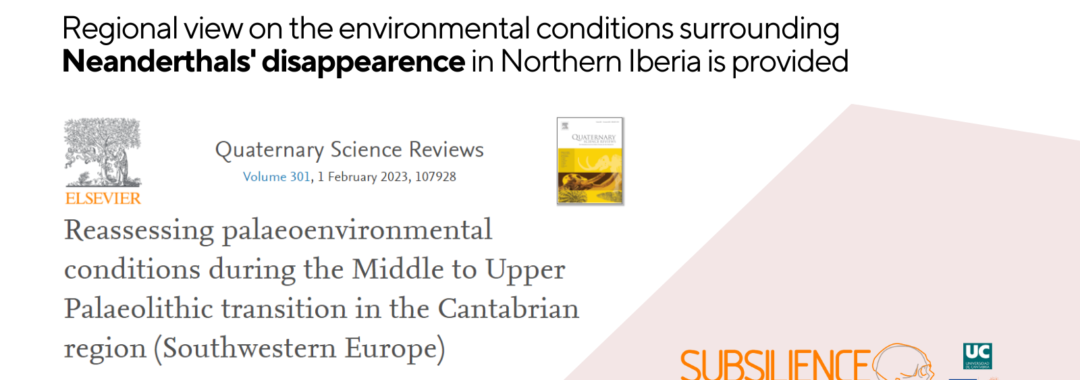The assessment of environmental conditions shows new insights about Neanderthals’ disappearance in Northern Iberia
Researchers from the University of Cantabria published in the scientific journal Quaternary Science Reviews a detailed analysis of the environmental records including microfauna, pollen, charcoals and isotopes in herbivore remains, found in archaeological sites
The study of past climatic and environmental changes is essential to understand human behaviour during Prehistory. The Cantabrian Region, in Northern Iberia, is a key region to unravel the Neanderthals replacement by our species (Homo sapiens). The research “Reassessing paleoenvironmental conditions during the Middle to Upper Palaeolithic transition in the Cantabrian region” published in the scientific journal of Quaternary Science Reviews, offers a regional view of the environmental conditions experienced from 55,000 to 25,000 years: a decisive period when those species inhabited.
The publication is leaded by researchers from University of Cantabria, Mónica Fernández-García, Ana B. Marín-Arroyo and Marco Vidal-Cordasco, and from the University of Lancashire in the United Kingdom, Jennifer Jones. The study answers one of the main objectives of the Subsilience ERC Project: to identify the causes of the Neanderthals decline in the southern European peninsulas by assessing the role that climate might had in human subsistence during MIS3. To do so, an in-depth analysis of the available environmental records recovered from archaeological and palaeontological sites has been carried out. Information about small-mammals, pollen, charcoals, and stable isotopes in herbivores is included.
Research outputs
The results of the study show highly variable environmental changes throughout the archaeological levels, in line with the climatic fluctuations observed in the marine and ice core records. Therefore, this research has not only homogenised the existing data (making them available and open to the scientific community), but also has modelled these data to obtain temperature and precipitation estimations, associated with concise radiocarbon chronologies.
The findings reveal a significant climatic shift that may have affected both human populations in the north of the Iberian Peninsula. Specifically, there is a progressive trend from the Mousterian to the Aurignacian towards colder temperatures, increasing aridity and landscapes opening, especially from 48,000 to 44,000 years, matching the late Neanderthal occupations, followed by a population hiatus, prior to the arrival of Homo sapiens.
The value of the study
Despite the multiple environmental indicators available, the research highlights the fragmentary nature of the regional record during this key period for human evolution and highlights the necessity of further research to obtain a high-resolution regional environmental record, which will allow us to continue to understand the causes behind this human extinction.
ERC Subsilience project
The SUBSILIENCE project, which promotes this work developed in the University of Cantabria, is funded by the ERC – European Research Council, the main European funding organization for research at the forefront of excellence, created by the European Union in 2007. SUBSILIENCE focuses on the subsistence strategies adopted by Neanderthals and early Homo sapiens in the peninsulas of southern Europe and evaluate the role that MIS3 climatic changes might had in their resilience as a species.
Link to the article: https://www.sciencedirect.com/science/article/pii/S0277379122005595
Audiovisual content: https://www.youtube.com/watch?v=GqimxSeiewo

